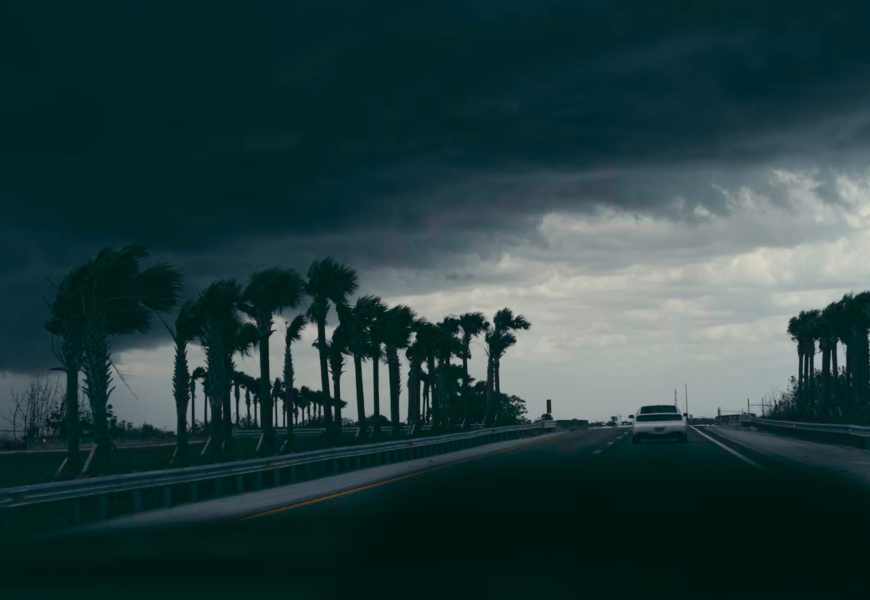Hurricane Ian has ravaged the United State’ southeastern coastline. In Florida, damages have exceeded billions of dollars. Several native Floridians at Conn have been impacted by the hurricane and the overarching climate crisis.
According to Florida Governor Ron DeSantis’ office on September 28, “Ian is currently a Category 4 hurricane with maximum sustained winds of 155 miles per hour, nearing a category 5.”
By definition, a Category 5 hurricane will leave most of the impacted area uninhabitable for weeks or months. This displacement has already begun in Florida. Per the Miami Herald, 10,000 people are already in shelters due to the effects of Hurricane Ian.
Christian Jacobsen ‘23 is from West Palm Beach, Florida. He lives on the east coast of Florida, where there was “no expectation to get hit by Ian.” The west coast of Florida has “a lot of old infrastructure and they were not prepared for a hurricane of this degree,” he added. Jacobsen has experienced hurricanes before, and most people don’t begin to take them seriously until they hit Category 3, he explained. Where Jacobsen lives on the east coast, most homes have been built with hurricanes in mind: “There most likely wouldn’t be homes floating away, as seen in Naples” he added.
Marcus Shestack ‘26 is from Miami, Florida. Shestack tells us that the Miami area was not hit badly, but the city lent its “rescue and fire team to other cities,” such as Tampa and Fort Myers. In 2017, South Florida was hit by Hurricane Irma leading Shestack and his family to evacuate. After that, Miami began “raising roads on coastal communities in response to flooding and sea level rise.” Shestack has several friends attending college in Florida who have been greatly impacted, Shestack added that his friends got over a week of school off.
The same year that Irma struck Florida, Hurricane Harvey had a catastrophic impact on Louisiana and Texas. Houston native Miranda Medina ‘26 was among those affected by the category 4 storm. “Water was leaking everywhere and there was molding,” she said. Medina’s cousins who live in Pasadena were forced to evacuate on account of their house flooding “ had to be rescued” she explained. Medina recalled that the entirety of Houston was destroyed. There were no plumbers available to fix Medina’s destroyed bathroom for a year and a half. Medina added, “We couldn’t go to stores or turn on our electricity.”
In terms of adding solar panels and other preventative measures to mitigate the effects of hurricanes, Professor of Geoscience and Environmental Studies, Douglas Thompson believes it should be a no-brainer. “The climate is very conducive to solar down there… solar is a really viable option.” Given the mass destruction, rebuilding homes is a significant undertaking. Thompson believes that “they should be rebuilt with different standards in mind so that they’re elevated, higher above the ground than they were originally to try to lessen the damage that could be caused with the storm surge coming in.” Amending protocol and home standards could help protect residents on the west coast of Florida the same way they are protected on the east coast.
Some communities are prepared to handle hurricanes, but many are not. This is partly due to the increase in hurricanes and their intensity according to the Center for Climate and Energy Solutions. “With climate change, hurricanes are getting much stronger and dropping much more rain due to the warming atmosphere that holds more water,” says Government and Environmental Studies Professor Jane Dawson. The Natural Resources Defense Council (NRDC) cites warmer ocean temperatures, rising air temperatures, sea level rise, and longer-lasting storms as a byproduct of climate change. These factors influence the severity of hurricanes. To mitigate the effects of climate change and its consequences, the NRDC advocates forgoing the burning of several nonrenewable energy options such as oil and gas in favor of more renewable, non-carbon emitting energy sources.
Despite the severity of both climate change and Hurricane Ian, Thompson is unsure if even this could change the minds of those who deny climate change, “If anything climate related should be very obvious it’s what’s going on out West with forest fires and drought. That’s been going on for 20 years now.” Undoubtedly, Thompson says, “The water shortage that’s taking place out there is undeniably a climate issue, and you’re still not necessarily seeing everyone react to that.”
Thompson advocates putting plans into place to reduce damage and catastrophic events like that of hurricanes even if they minimize resale value of homes or take a long time. Much of the practices in these communities are meant for attractiveness, but actually make things more dangerous. “They cut in canals so that boats can access the docks right next to homes… but that means the ocean surge can come right up all these channels and makes it easier to flood the homes.”
Even though Ian has caused mass destruction, Jacobsen believes that “with any large event, things will eventually return to normal.” Our climate, however, will not return to normal without significant changes in public policy as well as how we personally interact with our environment. Addressing climate change and the horrific destruction it creates is critical, now more than ever, as thousands of lives are being taken from California to Florida due to climate inaction. •










